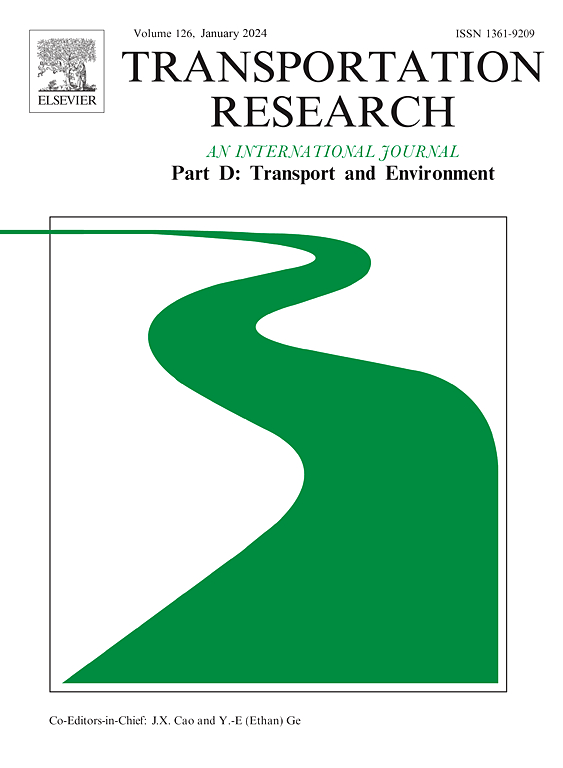Investigating the effect of estimating urban air pollution considering transportation infrastructure layouts
IF 7.3
1区 工程技术
Q1 ENVIRONMENTAL STUDIES
Transportation Research Part D-transport and Environment
Pub Date : 2025-02-01
DOI:10.1016/j.trd.2024.104569
引用次数: 0
Abstract
Transportation infrastructure layouts have significant impacts on urban air quality. This study develops a street-scale estimation model involving transportation infrastructure layouts based on machine learning to tackle the practical challenge in many cities of lacking dense air quality monitoring networks, and then investigates the effects of such layouts on both air pollution modeling and actual pollution levels. The results demonstrate that introducing transportation infrastructure layout variables into conventional models can significantly improve their general accuracy and stability, and particularly address their typical shortcomings in peak time predictions. Such variables together contribute an average of 28.63 % of model results, indicating their significance and non-negligible roles. To mitigate urban air pollution, constructing transportation infrastructure that encourages green travel over private vehicles is generally effective, yet the increased buses, subways, and charging stations in certain areas may lead to adverse effects. The improved petrol station layout and parking infrastructure utilization may also work.
求助全文
约1分钟内获得全文
求助全文
来源期刊
CiteScore
14.40
自引率
9.20%
发文量
314
审稿时长
39 days
期刊介绍:
Transportation Research Part D: Transport and Environment focuses on original research exploring the environmental impacts of transportation, policy responses to these impacts, and their implications for transportation system design, planning, and management. The journal comprehensively covers the interaction between transportation and the environment, ranging from local effects on specific geographical areas to global implications such as natural resource depletion and atmospheric pollution.
We welcome research papers across all transportation modes, including maritime, air, and land transportation, assessing their environmental impacts broadly. Papers addressing both mobile aspects and transportation infrastructure are considered. The journal prioritizes empirical findings and policy responses of regulatory, planning, technical, or fiscal nature. Articles are policy-driven, accessible, and applicable to readers from diverse disciplines, emphasizing relevance and practicality. We encourage interdisciplinary submissions and welcome contributions from economically developing and advanced countries alike, reflecting our international orientation.

 求助内容:
求助内容: 应助结果提醒方式:
应助结果提醒方式:


